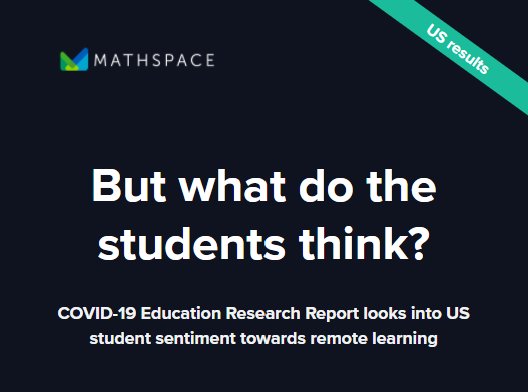But what do students across the United States think?
Students are one of the major stakeholders in our educational system, yet very little has been shared on what they think about returning to school and the pandemic overall. So our team surveyed students and teachers across the country, and gave them the opportunity to share their thoughts.


Although students are one of the major stakeholders - perhaps the biggest - in our educational system, very little has been shared on what they think about returning to school and the pandemic overall. So, between May and July of this year - right in the midst of the COVID-19 pandemic-driven school shutdown, our team surveyed over 5,000 students and 200 teachers across the country, and gave them the opportunity to express their opinions on topics such as returning to school this fall, their overall online learning experience, the role teachers play in education, and the social-emotional impacts of distance learning. (Click here to read the full report.)
On a recent episode of Remote Possibilities with Kevin Hogan, Daniel Tu-Hoa - Senior Vice President of Mathspace, shared our key findings from the report and shed some light on the difficulties students and teachers are facing this school year. Some of these challenges include:
- Returning to school this fall: We found that three out of four students are concerned over their academic preparedness as they start school this fall. It is interesting to note that this survey was taken at the end of the last school year (May/June). Meaning that while students were still finishing up the school year, they were already feeling as if they would not be fully prepared for the next one. Furthermore, due to the extended "COVID-slide", the vast majority of teachers agreed that their own students wouldn’t be sufficiently prepared for the new school year.
- Online learning: Over half of the students we surveyed expressed a desire to continue using online tools when they returned to class this fall. This shows that students are becoming more comfortable with technology and are gravitating towards more tech-based learning. Great! But, what this also shows is that there is a significant number of students - just under half of the students we surveyed - that do not want more online tools. So we have to ask ourselves: just as teachers are becoming digitally-drained from the hours of Zoom meetings, the multitude of “whiteboard apps” at their disposal, and the barrage of chats, are a significant number of students starting to suffer from tech-fatigue, as well?
As Daniel pointed out, “Whether or not [students] used digital tools before the COVID shutdown in the spring, [they] will be using digital tools now and for the foreseeable future.” As such, the COVID-19 pandemic marked a turning point for the ed-tech industry and education overall. Now more than ever, we’ll get to see which ed-tech products actually work and which fall short of the goal-line. To fully support students in this environment, companies must also start to find ways to simplify things for teachers. “I think it’s important at this point for ed tech products and companies like Mathspace to really support educators however they can.”, says Daniel. In response to the COVID shutdown, Mathspace published a series of webinars to help teachers set up and successfully run an online classroom, and has granted free access to Mathspace for teachers and students through the end of the calendar year.
But the responsibility of addressing these challenges really lies with academic policy makers. “We wanted to really start the conversation with educators, with education administrators, about how to solve some of these really big issues that have come up, particularly in K-12 education.”, states Daniel. Our report lays the foundation for educators to get started.
- What changes will be made to distance learning plans to ensure students don't continue to fall behind academically?
- How will teachers be better supported as they teach remotely?
Just as educators seek to give students agency within the classroom, it is our hope that students' voices will be also taken into consideration as administrators rise to the challenge.
Our team also ran a concurrent study with students and teachers across Australia. Interested in what they have to say? Click here.
If you are ready to learn more about Mathspace and how our program has helped teachers and students navigate learning through COVID-19, schedule a quick chat with one of our implementation specialists.

